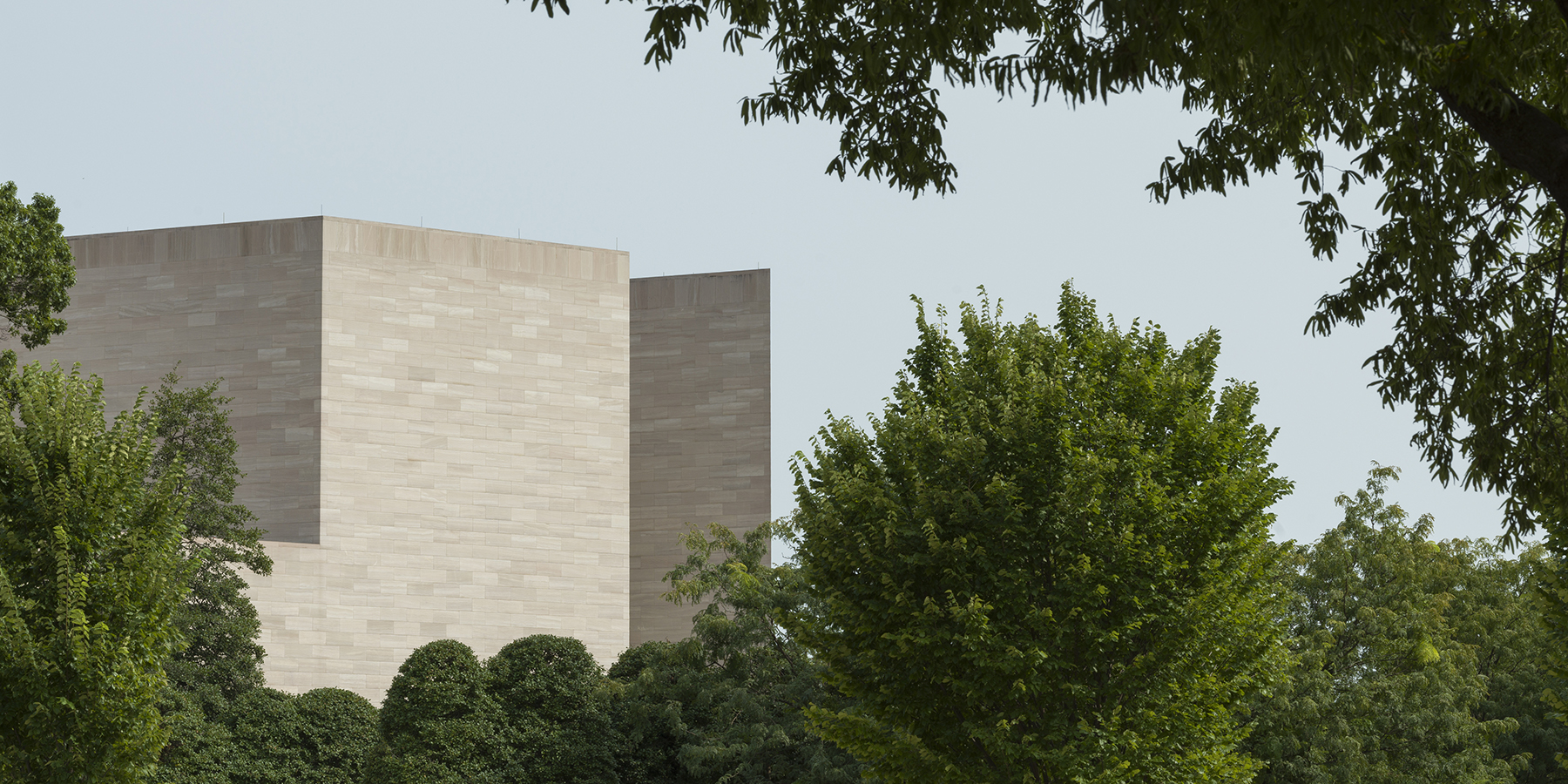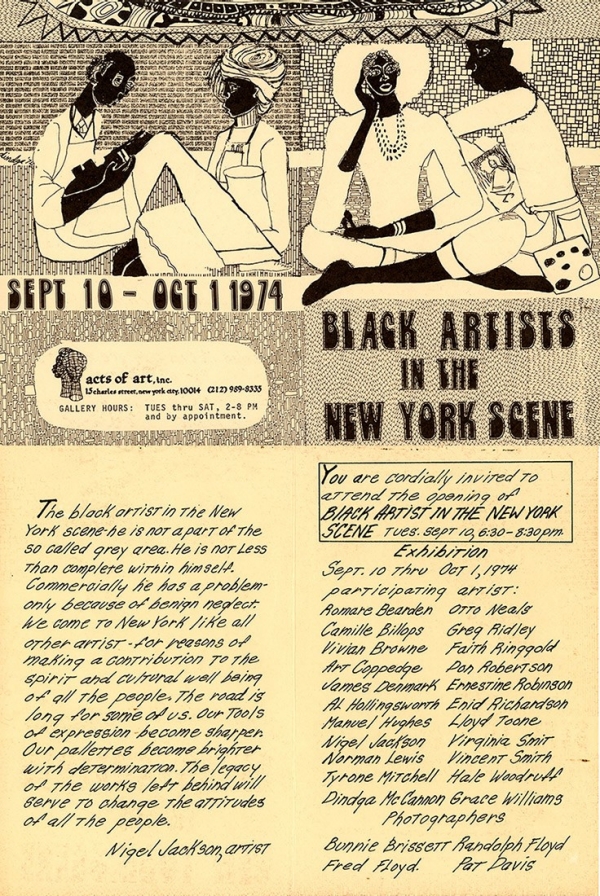My project explores two galleries established by and for African American artists in Greenwich Village in 1969. Acts of Art, founded by Nigel Jackson with his partner, Patricia Grey, opened in October 1969 on Bedford Street in the West Village; an ad in the Village Voice announced “its first ethnic showing, featuring Black Art in America.” The gallery moved to a nearby space on Charles Street at Sixth Avenue the following year, and closed for good in 1975. In 1971 Acts of Art hosted both Rebuttal to the Whitney Museum Exhibition: Black Artists in Rebuttal, the Black Emergency Cultural Coalition’s response to the Whitney Museum of American Art’s Contemporary Black Artists in America, and the first exhibition of “Where We At,” the Black women artists’ collective formed around Kay Brown, Dindga McCannon, and Faith Ringgold. Founded by Romare Bearden, Ernest Crichlow, and Norman Lewis, Cinque Gallery opened in December 1969 in the Public Theater’s building on Lafayette Street on the Village’s eastern edge, and operated in various locations downtown before folding in 2004. Malcolm Bailey, Cinque’s inaugural exhibition, was covered in the New York Times, and Beverly Buchanan, Melvin Edwards, and Charles Gaines were among the artists who showed at the gallery in its first years.
Cinque’s founders were established artists and well-respected figures. All three had been involved with the Harlem Artists Guild at the end of the 1930s; Bearden and Lewis were core members of Spiral, a group of Black artists formed in the aftermath of the 1963 March on Washington, and both were showing with some regularity in racially integrated commercial spaces—the only Black artists on otherwise white rosters. Cinque was an explicit response to what the founders described as the art world’s “de facto segregation,” and the invisibility of Black artists to New York’s galleries and museums. The gallery was to be a “showcase” for younger artists, and a “bridge between minority artists and the total cultural community.” Acts of Art was more closely aligned with the politics of Black representation than Cinque, but it shared Cinque’s mission of providing a place for Black artists to be seen, and to be acknowledged as artists, within a broader art world. “If you’re not a black artist, you cannot fully recognize the need for an art gallery specializing in fine art by black artists, LOCATED OUTSIDE THE GHETTO AREAS,” emphasized a membership brochure. “For the black artist to emerge at all, a gallery outside the ghetto must accept his work.”
Since the 1920s, Harlem had been the center of Black cultural and political life; in the 1960s, it was home to a number of cultural nationalist formations and the hub of the Black Arts Movement and Black political power in New York. But when Acts of Art and Cinque opened in late 1969, downtown Manhattan—the Villages, the Lower East Side, and what would become SoHo—had been home to established communities of Black artists, poets, and musicians for more than a decade. Spiral’s storefront was in the West Village on Christopher Street from 1963 to 1965, and most of the artists associated with the group lived downtown. The lead organizers of the Black Emergency Cultural Coalition, first formed in 1969 in response to the Metropolitan Museum of Art’s Harlem on My Mind exhibition, were downtown artists as well, including those who led negotiations with the Whitney and organized Black Artists in Rebuttal at Acts of Art: Benny Andrews, Lynn Bowers, Vivian E. Browne, James Denmark, and Cliff Joseph. One of the goals of this project is to chart the Black art world downtown, and to understand its relationships with artists and artists’ groups working in Harlem. Acts of Art and Cinque provide a lens for this mapping, and for reckoning with the ongoing occlusion of Black artists and formations from our pictures of New York’s downtown art world in the 1960s and 1970s. As Nigel Jackson insisted in the title of a 1974 exhibition at Acts of Art, there were and are “Black artists in the New York scene.”
I was looking forward to spending my time as a visiting fellow at the Center in the archives and libraries of the National Gallery of Art and its neighboring institutions in Washington. The pandemic made such access impossible for all of us, but the National Gallery’s library staff has been exceptionally helpful, guiding me to and digitizing relevant materials from the National Gallery’s Evans-Tibbs Archive and vertical files. I thank them, the Center’s leadership and staff, and my fellow fellows for their assistance and input, as well as for their own absorbing research interests. And I thank the artists who showed with Acts of Art and Cinque who were more than willing to sit for interviews via phone or Zoom, to share their stories about the time, the galleries, and the communities that surrounded and supported them in the late sixties and seventies.
Hunter College
Paul Mellon Visiting Senior Fellow, fall 2020
Howard Singerman continues on research leave through August 2021 and will be a Visiting Senior Fellow at the Smithsonian American Art Museum in June and July. He will reassume his position as Phyllis and Joseph Caroff Chair of Art and Art History at Hunter College in the fall of 2021.

